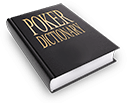Hand Combinations in Poker
Introduction
Combinatorics - the term sounds intimidating, but it's not. It's just a fancy word for hand combinations. If you are a beginner, understanding hand combinations is crucial to improving your gameplay.
This blog will help you understand the combinations and why they are essential.
Objective
The blog’s objective is to explain the hand combinations and their metrics.
What is Hand Combinations in Poker?
Also known as combinatorics or combos, Poker combinations are the number of hand combinations in a particular round. This will help you understand the number of AK variations you can hold in a specific spot.
There are 52 cards in a standard deck, 13 of each suit and 4 of each rank. This means there are 16 possible hand combinations for every unpaired hand, 12 hand combinations for unpaired suit, four for suited hands, and six combinations for pocket pair.
To evaluate these combinations, we usually use two types of matrix: The hand matrix and the card matrix.
A grid represents the hand and card matrix. The hand matrix states that Holdem has 1326 possible starting hand combinations.
Why Combinatorics Is Essential in Poker?
Poker is a strategy game; you need data or numbers to build a strategy. Understanding these card combinations will help you develop a good plan and gameplay. It will also help you in understanding your opponent’s gameplay. You can decide when to Call, Raise, or Fold. Lastly, you can even analyse your opponent’s cards and better understand poker ranges.
Combinatorics and Hand Range Charts
Combinatorics is a fancy term for counting possibilities. It helps us understand and gives more insights about the game. For example, using the combinatorics chart, you can determine which hand to play.
Let’s say you are playing from the button position. You want to know what hands to play. Assume there are 534 combinations from that position, and we already know there are 1,326 starting hand combinations. This means your range is about 40% of all the possible starting hands.
Now, if you want to know the hand combinations from the small bling position, you can use the same matrix to do so.
Using Combinatorics at the Bottom of Hand Ranges
There are some guidelines regarding the number of hands you can play from each position. For example, if you are the first one to act, you can play around 15% of the hands you are dealt.
Here are some things you should consider:
- Several good hands you have to bet?
- How often have you been in this situation with a busted straight draw?
- Out of those busted straight draws, how many are suited (same suit), and how many aren't?
To solve the problems mentioned above, you should have two and a half solid hands for every bluff. If you have 20 goods to bet with, you should have 5 to 10 bluffs.
Let's say the cards on the table can make different straights, and if you have all the possible combinations, you can end up with many hands to bluff. But realistically, you can only have some of the possible combinations. Now you have to choose which ones you bluff with.
The best ones to bluff with are usually the ones that make it difficult for your opponent to have a good hand.
Combinatorics: Poker Hand Probability Explained
Combinatorics is just a fancy word for counting different probabilities. To understand this, we will take an example of four-of-a-kind. Four-of-a kind is when you have four cards of the same ranks, like four Kings.
Now, if the community cards already have two kings, then there’s only one combination of cards left to make a four-of-a-kind: the remaining two kings in your hand. But if there are three-of-a-kind cards on the community cards, then more combinations exist to make a four-of-a-kind. To figure this out, we can multiply the one card we need for four-of-a-kind by the number of cards left in the deck after the flop. This will give you the number of combinations you have to make four-of-a-kind. Remember, you will not have all the combinations in your starting hands.
Frequently Asked Questions
How many total combos of hands are there in poker?
There are a total of 1326 combinations of hands in poker.
How many combos of KK?
There are a total of 6 possible combinations of KK.
How many flops are possible in poker?
19,600 flops are possible in poker.
Conclusion
Mastering hand combinations is essential, especially if you're a beginner. This will help you understand your cards and give you an idea about your opponent's gameplay. You can even make informed decisions about your actions, such as when to bet, raise, call, or fold. Just remember that practice and patience are the key. So, keep learning and start practising to master the game.
